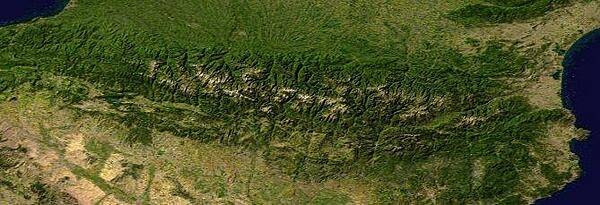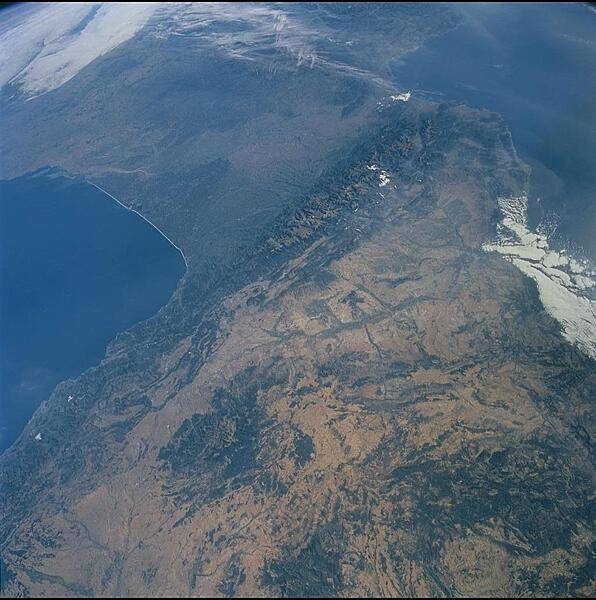Andorra
Photos
3 Photos
Filter Categories
All
Filters
Composite satellite image of the Pyrenees. Andorra lies about one-third of the way into the range from the east (right). The country is composed primarily of rugged mountains, but these are dissected by three narrow valleys where most of the populace lives. Image courtesy of NASA.

The Pyrenees (whose highest point is Spain's Pico d'Aneto 3,404 m; 11,168 ft) extend from the Bay of Biscay (west, left) to the Gulf of Lyon (east, right). Spain lies south of the range, France is to the north, and Andorra is entirely within the range near the eastern snow patch. There is a long history of mining in the Pyrenees - tin, tungsten, talc, fluorite, barium, and gold. Image courtesy of NASA.

View of the Pyrenees Mountains between France and Spain taken April 1985. The snow-covered mountains, which form a formidable physical barrier between France to the north (left) and Spain to the south (right), are the main focus of this low-oblique, southeast-looking photograph. Scarcely interrupted by accessible passes and pierced in only two places by railroad tunnels, the Pyrenees are an ideal natural boundary between the Iberian Peninsula and the rest of Europe. The northern flank of the Pyrenees is characterized by a series of large alluvial deposits that fan out across southwestern France. The darker, roughly triangular area in southwest France is part of the forested Aquitaine Basin. The southern flank of the Pyrenees (Spain) is characterized by aridity and very rugged, mountainous conditions. Human settlement is sparse throughout the Pyrenees. However, because the region is rich in mineral waters, there are dozens of mineral water resorts, and winter sports attract visitors from southwestern France. The very small mountainous country of Andorra (not distinguishable in this photograph) has survived in an inaccessible upper valley of the Pyrenees. Image courtesy of NASA.
